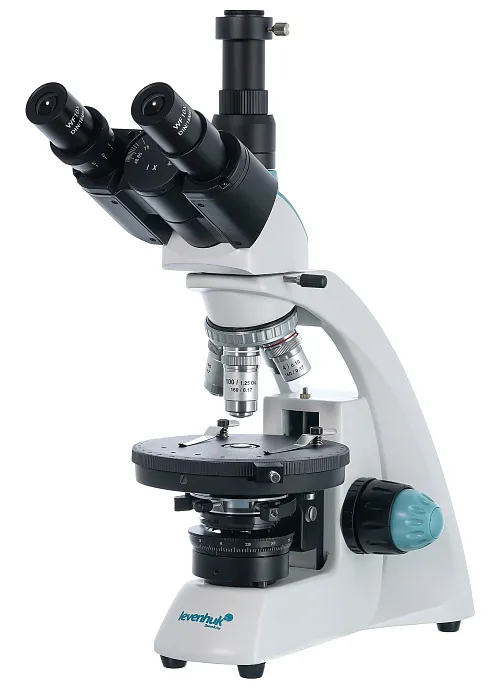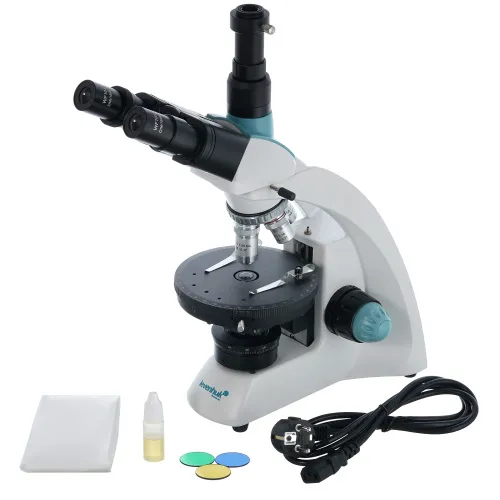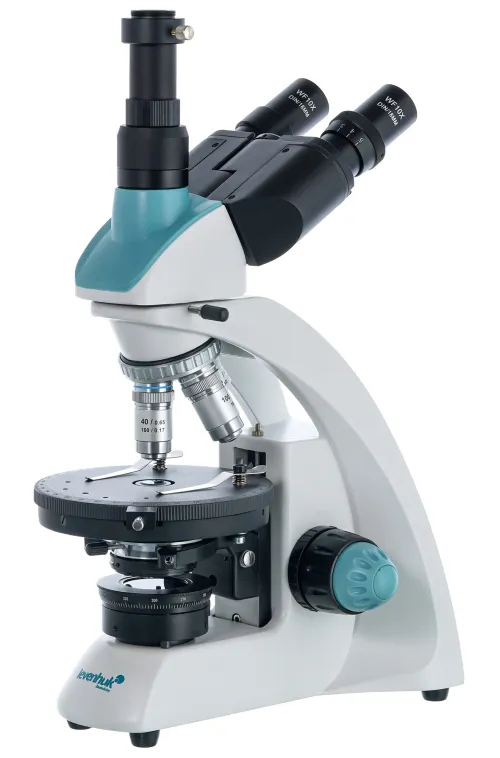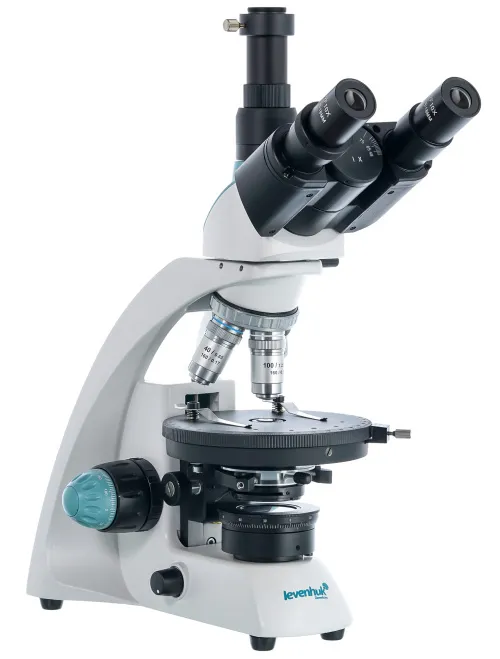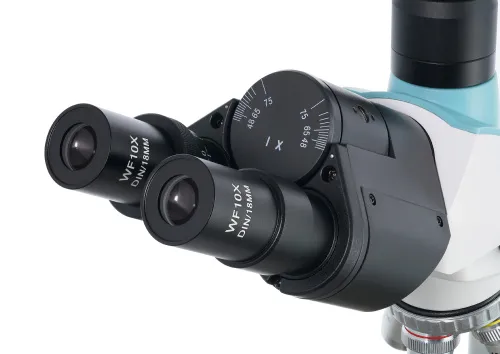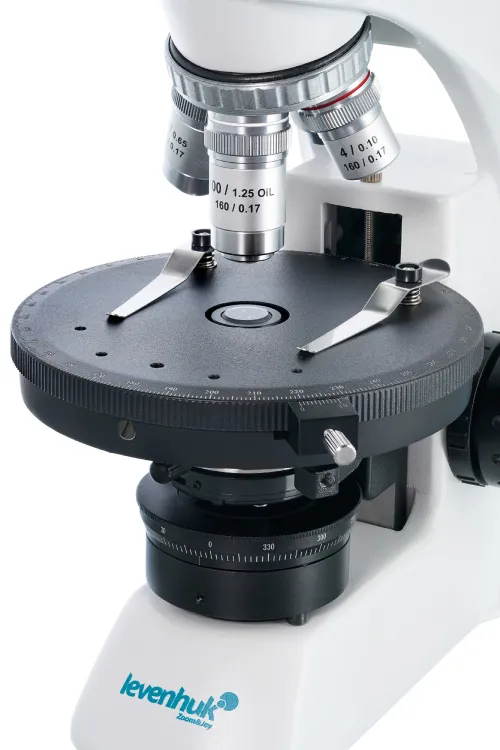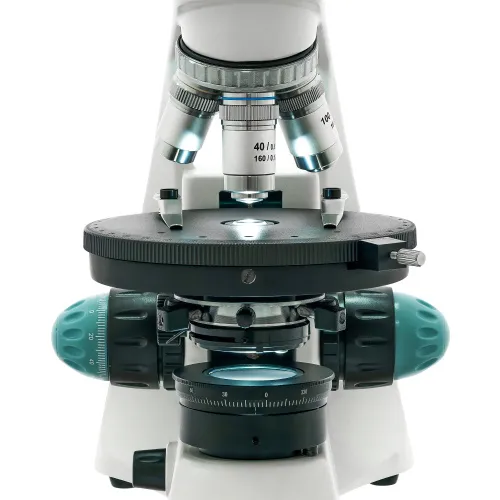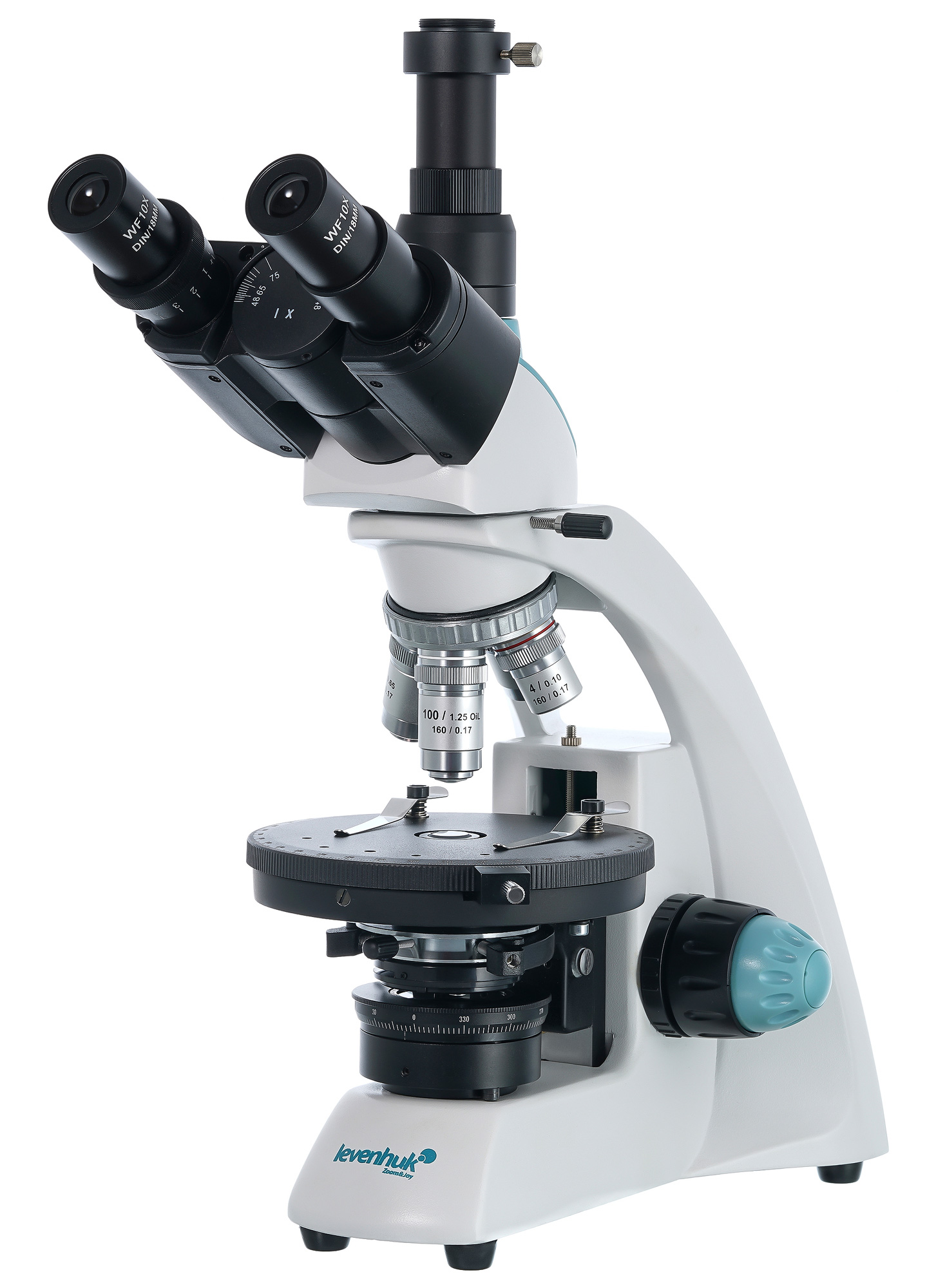Levenhuk 500T POL Trinocular Microscope
Magnification: 40–1000x. Trinocular head, achromatic objectives, LED lighting with a collector, built-in polarizer and analyzer
| Product ID | 75427 |
| Brand | Levenhuk, Inc., USA |
| Warranty | lifetime |
| EAN | 5905555005324 |
| Package size (LxWxH) | 42x26x33 cm |
| Shipping Weight | 5.36 kg |
The Levenhuk 500T POL Microscope allows you to conduct bright field research as well as use polarized light. Its capabilities can be used in medicine, biology, crystallography, criminology, metallography, and other scientific fields. This professional-level microscope features a reliable design and high-quality optics.
The microscope has a trinocular head: a binocular visual part is slightly inclined, while an ocular tube for installing a digital camera is located vertically. The head can be rotated 360°. The optical scheme consists of wide-field eyepieces with 10x magnification and achromatic objectives with 4x, 10x, 40x, and 100x magnification. The front lenses of the 40x and 100x objectives are equipped with protective spring-loaded frames. You can conduct research using the oil immersion method with the help of a 100x objective. Coarse and fine focusing are available.
The microscope uses a round rotating stage. Classic clips are used for fixing microscope slides on it. Under the stage, there is a condenser with an iris diaphragm and a filter holder. At the very bottom, there is a lighting unit consisting of a LED bulb with a collector. The light brightness is adjustable. In addition, the microscope features a built-in polarizer and analyzer.
The lighting is powered by an AC power supply.
Features:
- Laboratory microscope with a built-in polarizer and analyzer
- Trinocular head with 360° rotation
- Wide-field achromatic optics with 40–1000x magnification
- 3W LED lighting with a collector, brightness adjustment, and an AC power supply
- Condenser with an iris diaphragm, with adjustable height
The kit includes:
- Microscope with a polarizer and analyzer
- 4x, 10x, 40xs, 100xs (oil) achromatic objectives
- WF10x/18mm eyepieces (2 pcs)
- Abbe condenser N.A. 1.25 with an iris diaphragm and a filter holder
- Filters: blue, green, yellow
- Calibration slide
- Fuse
- C-mount
- Bottle of immersion oil
- Power cord
- Dust cover
- User manual and lifetime warranty
| Product ID | 75427 |
| Brand | Levenhuk, Inc., USA |
| Warranty | lifetime |
| EAN | 5905555005324 |
| Package size (LxWxH) | 42x26x33 cm |
| Shipping Weight | 5.36 kg |
| Type | biological, light/optical |
| Microscope head type | trinocular |
| Optics material | optical glass |
| Head | 360 ° rotatable |
| Head inclination angle | 30 ° |
| Magnification, x | 40 — 1000 |
| Eyepiece tube diameter, mm | 23.2 |
| Eyepieces | WF10x/18mm (2 pcs.) |
| Objectives | achromatic: 4x, 10x, 40xs, 100xs (oil immersion) |
| Revolving nosepiece | for 4 objectives |
| Interpupillary distance, mm | 48 — 75 |
| Stage, mm | Ø135 |
| Stage features | 360 ° rotatable, with clips |
| Eyepiece diopter adjustment, diopters | ±5 |
| Condenser | Abbe condenser N.A. 1.25 with an iris diaphragm and filter holder, with adjustable height |
| Diaphragm | iris |
| Focus | coaxial, coarse (16mm) and fine (0.002mm) |
| Body | metal |
| Illumination | LED |
| Brightness adjustment | ✓ |
| Power supply | 110–220V |
| Light source type | with a collector, 3W LED |
| Light filters | blue, green, yellow |
| Additional | a built-in polarizer and an analyzer |
| User level | experienced users, professionals |
| Assembly and installation difficulty level | complicated |
| Application | laboratory/medical |
| Illumination location | lower |
| Research method | bright field |
| Pouch/case/bag in set | dust cover |
We have gathered answers to the most frequently asked questions to help you sort things out
Find out why studying eyes under a microscope is entertaining; how insects’ and arachnids’ eyes differ and what the best way is to observe such an interesting specimen
Read this review to learn how to observe human hair, what different hair looks like under a microscope and what magnification is required for observations
Learn what a numerical aperture is and how to choose a suitable objective lens for your microscope here
Learn what a spider looks like under microscope, when the best time is to take photos of it, how to study it properly at magnification and more interesting facts about observing insects and arachnids
This review for beginner explorers of the micro world introduces you to the optical, illuminating and mechanical parts of a microscope and their functions
Short article about Paramecium caudatum - a microorganism that is interesting to observe through any microscope

